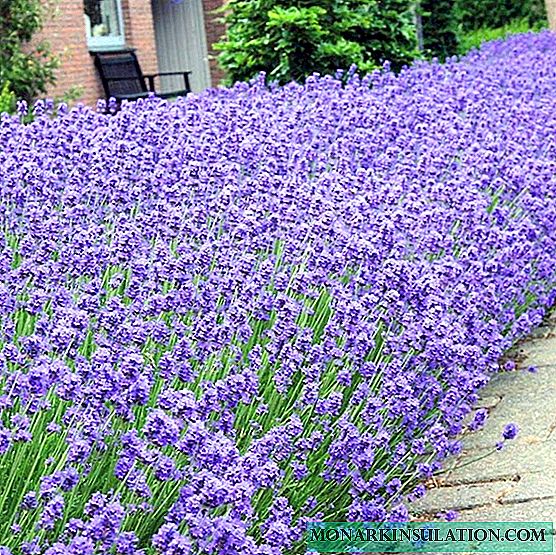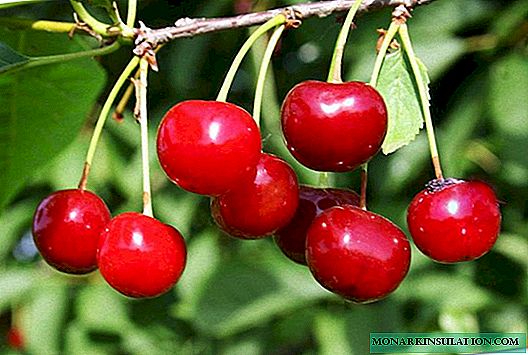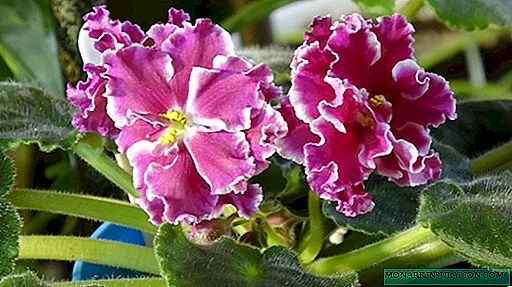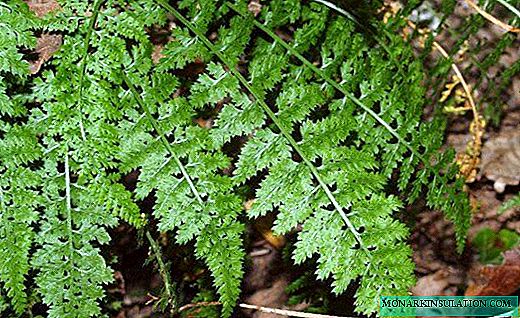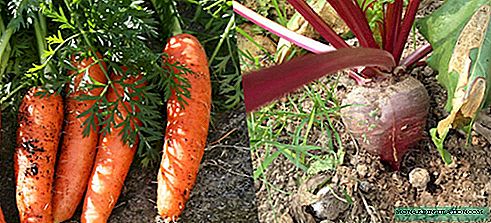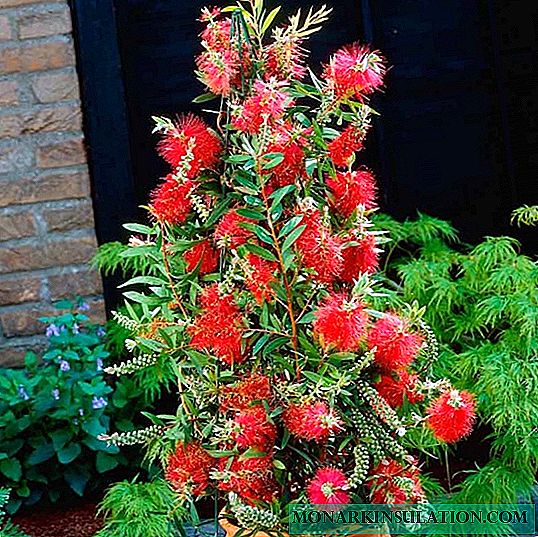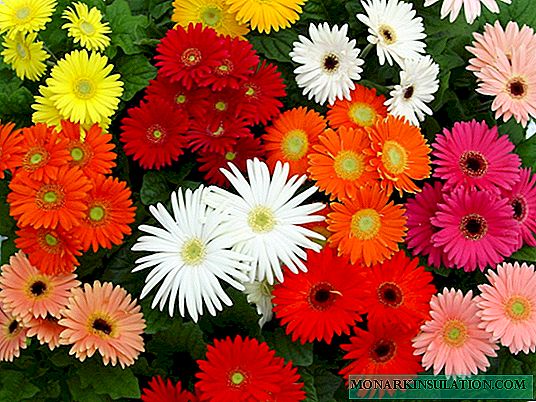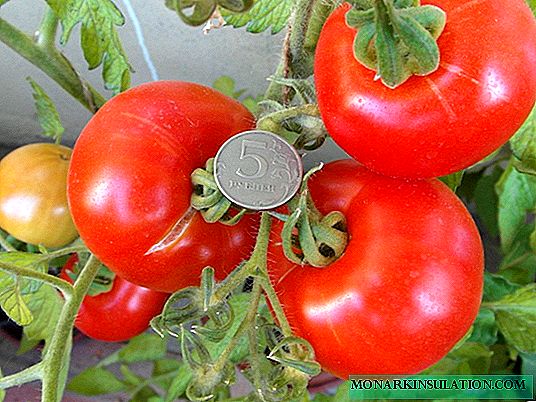One of the best ultra-early varieties, tomato Katya F1, was bred relatively recently; it was added to the State Register of the Russian Federation in 2007. He quickly began to enjoy success among summer residents, due to his high qualities, productivity, unpretentiousness, which allows even inexperienced gardeners to achieve good results.

Tomato Katya F1 was created by breeders S.V. Balabanyuk and Y. B. Alekseev by order of the seed company "Semko-Junior".
The variety is most suitable for the climatic conditions of the North Caucasus region, but it is also successfully grown in other regions of the Russian Federation, and planting in greenhouses further increases the area of its distribution.
Description of tomato variety Katya
Katya F1 is an ultra-early variety, one of the best. Fruits ripen in 75-80 days. High-yielding - harvested per square meter of 10 kg, and in greenhouses 1.5 times more. The plant is stunted, up to 70 cm tall, but requires mandatory garter, especially fragile branches with heavy clusters of fruits.

In brushes up to 8 flat-round, smooth, red tomatoes, weighing up to 130 g. They have a good taste. This variety is salad, but is also great for canning, pickling, making tomato juice and other preparations. Most often they are consumed fresh, because they ripen early when they are not yet conserving.
The fruits all ripen almost simultaneously, so the main crop is harvested immediately. These tomatoes are stored for a long time. It is recommended to remove slightly unripe fruits for storage and transportation for sale - they quickly ripen in a few days. After the main harvest, Katya's tomatoes still bear fruit, but the number of ovaries is formed much less.
Tomato Katya pink F1
It is entered in the State registry of the Russian Federation in 2017. While he is new, he has already gained a lot of his fans. In terms of varietal qualities, productivity, agricultural cultivation techniques used and other indicators, the characteristics of tomato Katya pink F1 are fully consistent with the main variety.

It differs only in color and taste of the fruit.
Advantages and disadvantages
Katya's tomatoes are popular in private households and are very beloved by farmers for their high yields and marketability suitable for commercial cultivation.
Advantages of tomatoes Katya F1:
- ripen very early;
- excellent taste for the hybrid;
- universality of application;
- high rates for commercial cultivation - keeping quality, transportability;
- beautiful fruits, do not crack;
- high-yielding variety;
- unpretentiousness;
- resistance to most tomato diseases.
Disadvantages:
- fragility of stems - they need to be tied, especially brushes with fruits;
- damage by phomosis - this disease is easily prevented by observing the rules of agricultural technology (regular loosening of the soil, moderate watering, frequent ventilation of greenhouses), spraying bushes with special means.
Features of growing seedlings of the variety Katya
To grow tomatoes Katya F1, you do not need to create any additional conditions for care. Agricultural technology is the same as for most other types of tomatoes. Since this is a hybrid, every year you need to buy new seeds, because collected from the fruits do not have the necessary properties.
Seed planting time
When to plant the seeds, it is determined by the climatic conditions of the region, taking into account the fact that after sowing the seeds, the seedlings are grown for 2 months, then they are planted on beds, and the first crop ripens in a month.

In warm regions, seeds are planted in seedlings in boxes in late February. And in colder climates, if there is no greenhouse, bushes are planted in open ground in early June. In this case, the seeds for seedlings are sown in late March.
There is another way. Planting seeds is done in open ground (covering with a film) in early May and kept under cover for a month. But then the fruiting will be only in the second half of summer. In this case, the early ripening properties of this variety are lost.
Seed preparation
The seeds purchased in the store have already been processed - you can not disinfect them and then their preparation includes only such stages:
- calibration - remove damaged and small seeds, check for germination in saline (those that are not sown, but remain at the bottom of the tank are suitable for sowing);
- soaking - spread the seeds on a wet cloth or foam, and cover with a damp cloth on top, it takes about 18 hours to swell, long roots should not be allowed to sprout because they are brittle;
- hardening - place the seeds after soaking in conditions with low temperature (for example, on the lower shelf of the refrigerator) so that they better adapt to adverse conditions, while increasing seed germination and immunity of future plants.
Soil requirements
For growing seedlings, it is best to buy ready-made soil for tomatoes, which is perfectly balanced in nutrient composition and acidity.
Some gardeners prefer to prepare the soil on their own.
The composition of the soil mixture for seedlings:
- garden land;
- compost;
- sand;
- peat;
- dolomite flour or wood ash to neutralize soil acidity;
- mineral fertilizers;
- sphagnum moss soil breathability improvements can be added.
Landing pattern
Sowing of seeds is done immediately in separate pots or previously in containers for subsequent dive into small pots:
- Drainage is placed at the bottom of cups or containers, and 5cm thick soil on top.
- In containers, each seed is laid out 2-3 cm apart.
- sprinkled on top of the earth no more than 2 mm.
- Pour water from a spray bottle.
- Cover with a film or glass, placed in a warm, bright place.
Seedling Care
To obtain high-grade seedlings, provide quality care for it.
- The glass lid from the container is opened daily for ventilation, and after germination the shoots are removed.
- They maintain optimal temperature, lighting and humidity conditions in the room.
- Feeding is done periodically.
- Regular moderate watering is provided using a spray gun.
- A pick is done after the appearance of the first pair of true leaves. Seedlings are abundantly watered, and then gently, using a teaspoon, is removed from the container and placed in a prepared pot.
- When the plants take root and gain strength, they are watered in the standard way using a watering can. Water must not be allowed to fall on the leaves to prevent diseases.
- Lighting is very important, daylight should be at least 12 hours. With its lack, phytolamps are used.
Planting seedlings in open ground
For the Katya variety, beds should be selected on loamy or sandy loamy areas, the soil should be breathable. If the soil is acidic, then every 3 years you need to add lime or dolomite flour (300-600 g per square meter) to it.
When the site does not have suitable soil for the beds, it can be prepared. In heavy clay soils add river sand (1 bucket per square meter), compost. If you add sand with organic matter annually for at least 5 years, the soil will become loamy.
The time for planting Katya tomatoes in the open ground depends on the region - in the south it is the beginning of May, and in the more northern from the beginning to mid-June. The soil should already warm up well and frost return is ruled out.
Pre seedlings need to be hardened. To do this, when the weather is warm, they take it out into the garden for several hours during the day and place it in partial shade. This procedure significantly improves the adaptation of plants in a new place.
The holes in the garden are made with the calculation of 5-6 bushes per square meter. They are pre-watered, and then seedlings are planted. The stems are buried a little more than the level at which they were in the containers. Then the plants are watered and sprinkled on top of the ground.
Tomato Care
Preparing seedlings is only the first step to getting a good harvest. It is required in the future to follow all the rules for caring for these plants. Proper agricultural technology for the care of this variety requires the fulfillment of several mandatory conditions.
Watering
This ultra-early variety needs moderate regular watering. Each well requires up to 1 liter of water, but it must not be allowed to stagnate in it. Water should not fall on leaves and fruits. The most favorable time is morning and evening.

Watering is most important during the adaptation of seedlings in a new place, in the heat, when flowering begins.
Fertilizer
For the first time, tomatoes are fed 10-12 days after transplanting. Organic and mineral fertilizers are used. For 9 l of water, 1/10 of the mullein and 20 g of superphosphate are added. This solution is enough for 10 plants. The following 2 top dressings are done every 2 weeks. Apply mineral fertilizers.
Stepson
It is important to form bushes correctly. This procedure is necessary to remove excess shoots so that the fruits develop better.

It is advisable to do stepsoning in the morning. For trimming use scissors or a knife. Leave one or two stems.
Loosening
This variety is regularly spud, especially in areas with heavy soil. The first loosening is done 1.5 weeks after transplanting, subsequent every 2 weeks. Before this procedure, tomatoes are watered - earthing up with moist soil improves root growth.
Diseases and pests
Tomato Katya F1 is resistant to many diseases typical of tomatoes, except for phomosis (brown rot), which can be prevented by using copper oxychloride for spraying. But, unfortunately, it is prone to attack by pests, like other garden plants.
The root system is affected - a bear, larvae of the May beetle, wireworm. Struggle with them by mechanical means and the use of special poisonous granules, which are added to the wells during planting.
Ground parts damage aphids, whiteflies, caterpillars of scoops. To combat them, spraying with solutions of special drugs (Actara) is used.
Mr. Summer resident recommends: cleaning and application of tomato Katya
Thanks to its productivity and unpretentiousness, the tomato variety Katya pleases with an abundance of ripe tasty tomatoes even inexperienced gardeners. Since the main part of the crop ripens at the same time, it is better to take care of its preservation in advance.
For fresh salads, some of the tomatoes are left on the bushes until fully ripened. To provide yourself with fresh tomatoes for a longer time, it is better to remove part of the crop with slightly unripened fruits - they will ripen and will be stored for a long time.
The pulp of tomatoes Katya F1 is dense, the peel does not crack, so they are excellent for preservation. Harvest is harvested when the tomatoes are already ripe, but strong, not overripe.

